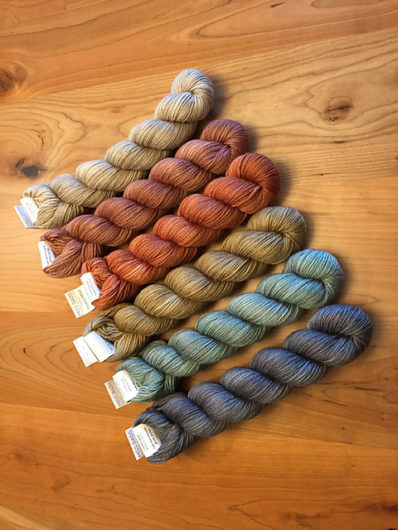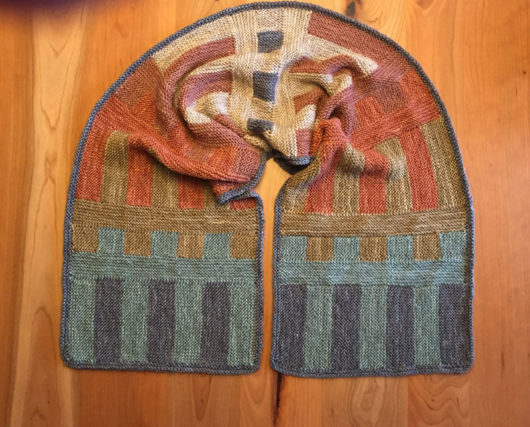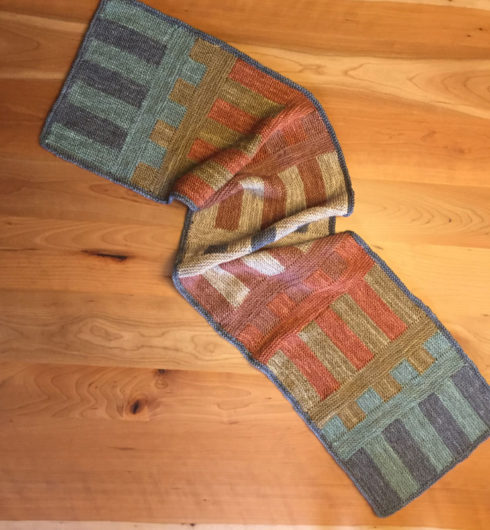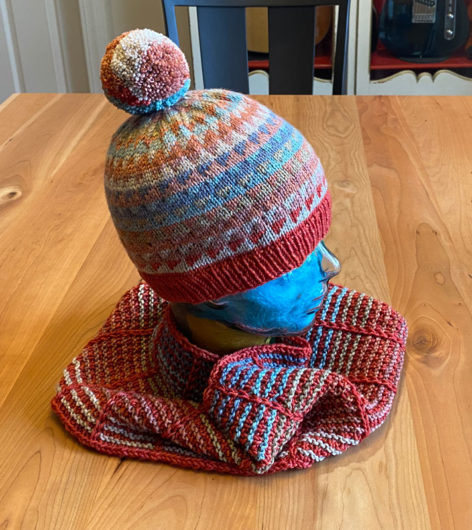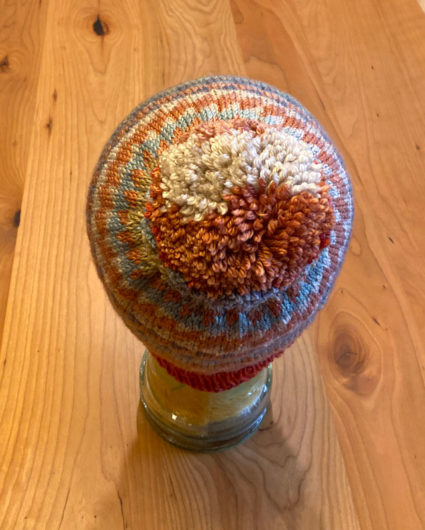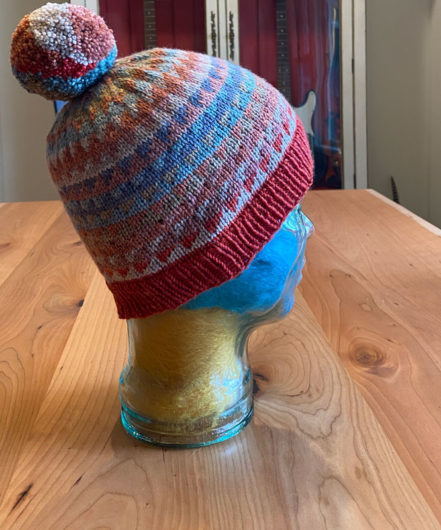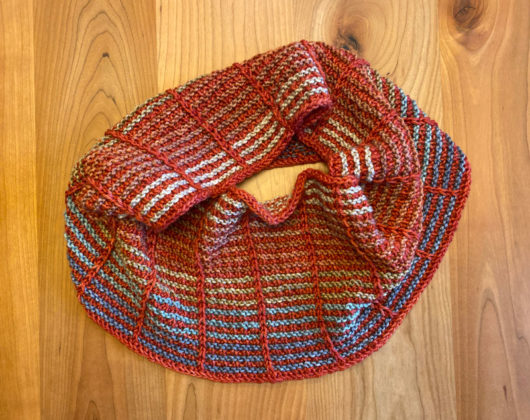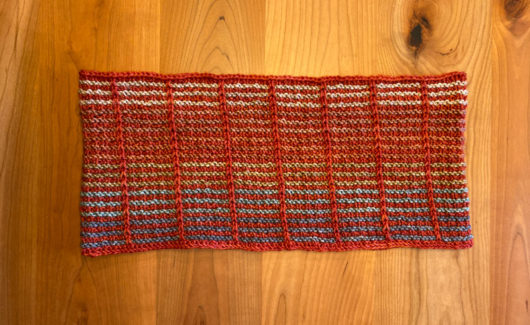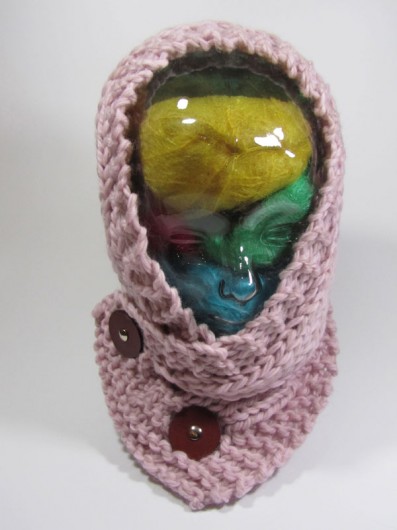This is Kirsten Kapur’s Cladonia minus its lovely loopy picot edge because, alas and alack, I ran out of yarn. So, mostly alack. I was determined to give the edging a try. With ten inches remaining I ran out of yarn. ARGGH. Honestly, though, I’m not a big loopy fringe person so I’m totally satisfied.
As cool a shawl pattern as this is, and it is, my guess is what captivates is this yarn. This yarn is Gauge Dye Works MCN fingering yarn, self-striping. I’ve had the yarn long enough that my ball band is from the before-times when this company called itself Caterpillar Green. Here’s my skein of their Olive Branch colorway.
It’s spectacular yarn.
I am very pleased about the name change because I knit this shawl in late July and early August during the height of a serious gypsy moth infestation in my neck of the woods. The assault of the caterpillars and their frass (as in from-r-ass) was totally disconcerting. Usually I save a ball band until I’ve completed a project. This one I discarded quickly. It conjured up evil feelings as I contemplated having to abandon our deck for almost two months while the wiggly ones ate our big oak tree. Ugh. Back to the sublime. My pretty shawl. Here’s a close-up.
Cladonia is easy peasy worked from the top down. The lace work at the end is simply accomplished. And by then a knitter is committed to the project and that helps concentration.
With Gauge Dye Works yarn the yarn does all the color work. You find the end with a length of undyed yarn, snip it off, and then–at least in Olive Branch–you’re good-to-go. Triangle and half circle shawls work well. And by poking around on Ravelry or participating in the Gauge Dye Works group you can see how various yarns work up in various patterns. My skein was 170 grams, just under 600 yards.
Here’s Cladonia spread out to to show off its full wingspan of 54 inches across the top and 27 inches at its deepest. This yarn makes the somewhat boring stockinette main section of the shawl interesting. You can’t help but look forward to the next color shift.
If you’re interested in purchasing Gauge Dye Works yarns your best bet is to sign up for their emails. Because once a batch becomes available it sells out super-fast. The price is, well, a lot. But I think it’s totally worth it to have this much of a yarnie adventure.
It’s definitely time for me to post my version of Laura Aylor’s Summer Camp small shawl. In a calm non-jewel-toned moment awhile back I purchased two off-white skeins of Rhichard DeVrieze Peppino. That’s his wonderful merino fingering weight yarn. So I had 450 yards of yarn that begged to be combined with something else. My something else turned out to be a 438 yard skein of Wobble Gobble‘s merino fingering weight.
Summer Camp is very lightweight. I wanted something that I could wear on cooler summer evenings while being feted at the pizza place in the back of the BP station, a major Hillman activity hub that also houses a Subway. It could even dress up my Dollar Store shopping trips. Not that there’s been any out-on-the-town dates of late. Or any non-essential shopping trips. Not this year. But we can still knit!
Summer Camp is a wonderfully clear pattern. Aylor even includes a row-by-row stitch count chart, laid out stripe-by-longer stripe. I started mine with the solid color so that the scallops in the bind-off would end in the speckled Wobble Gobble.
Here’s a closer look at the Wobble Gobble I used. Wonderful yarn.








